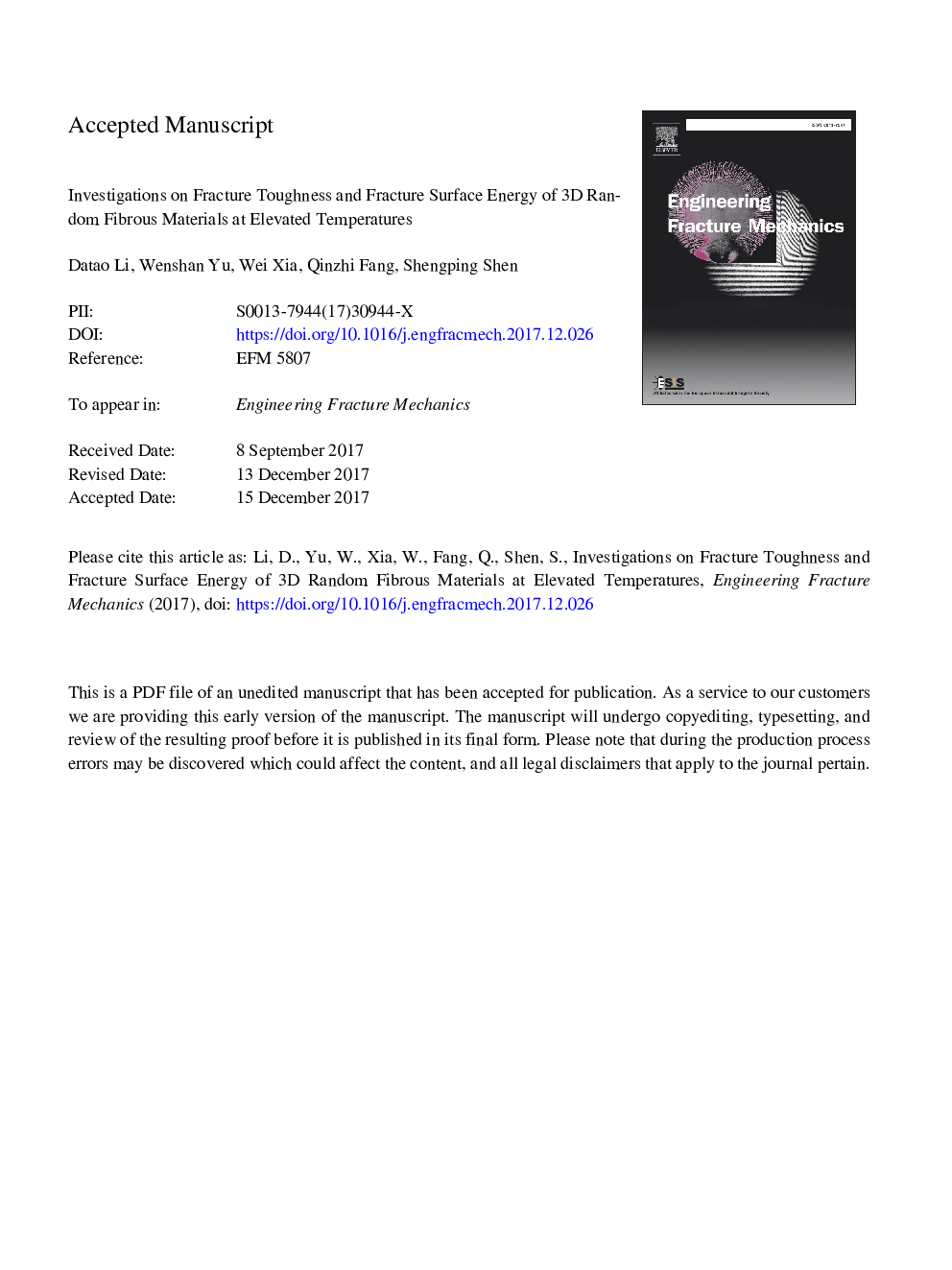| Article ID | Journal | Published Year | Pages | File Type |
|---|---|---|---|---|
| 7169095 | Engineering Fracture Mechanics | 2018 | 21 Pages |
Abstract
In this study, model â
fracture toughness of three-dimensional random fibrous (3D RF) materials with a porosity of 83% is investigated from room temperature to 1273â¯K by performing experiments with compact tension (CT) specimens in the through-the-thickness (TTT) and in-plane (IP) directions. The experiments show that the fracture toughness in the TTT and IP directions increases from 0.0842 to 0.1162â¯MPa·m1/2 and 0.4292-0.6767â¯MPa·m1/2, respectively, with increasing temperature until a critical temperature (1073â¯K and 1223â¯K, respectively) is reached, following which the fracture toughness decreases from 0.1162 to 0.0819â¯MPa·m1/2 and from 0.6767 to 0.6170â¯MPa·m1/2, respectively. The significant changes at elevated temperatures are directly attributed to the viscous flow of the crack tip. In addition, a viscous flow contribution to the fracture surface energy of the 3D RF material is identified at high temperatures. The curves of the fracture surface energy versus temperature data for the TTT and IP directions can be partitioned into sections by fitting with experimental observations. Based on the two fitted curves, we calculate the activation energy of the viscous flow in the TTT and IP directions as 220.3â¯kJ/mol and 892.2â¯kJ/mol, respectively.
Related Topics
Physical Sciences and Engineering
Engineering
Mechanical Engineering
Authors
Datao Li, Wenshan Yu, Wei Xia, Qinzhi Fang, Shengping Shen,
